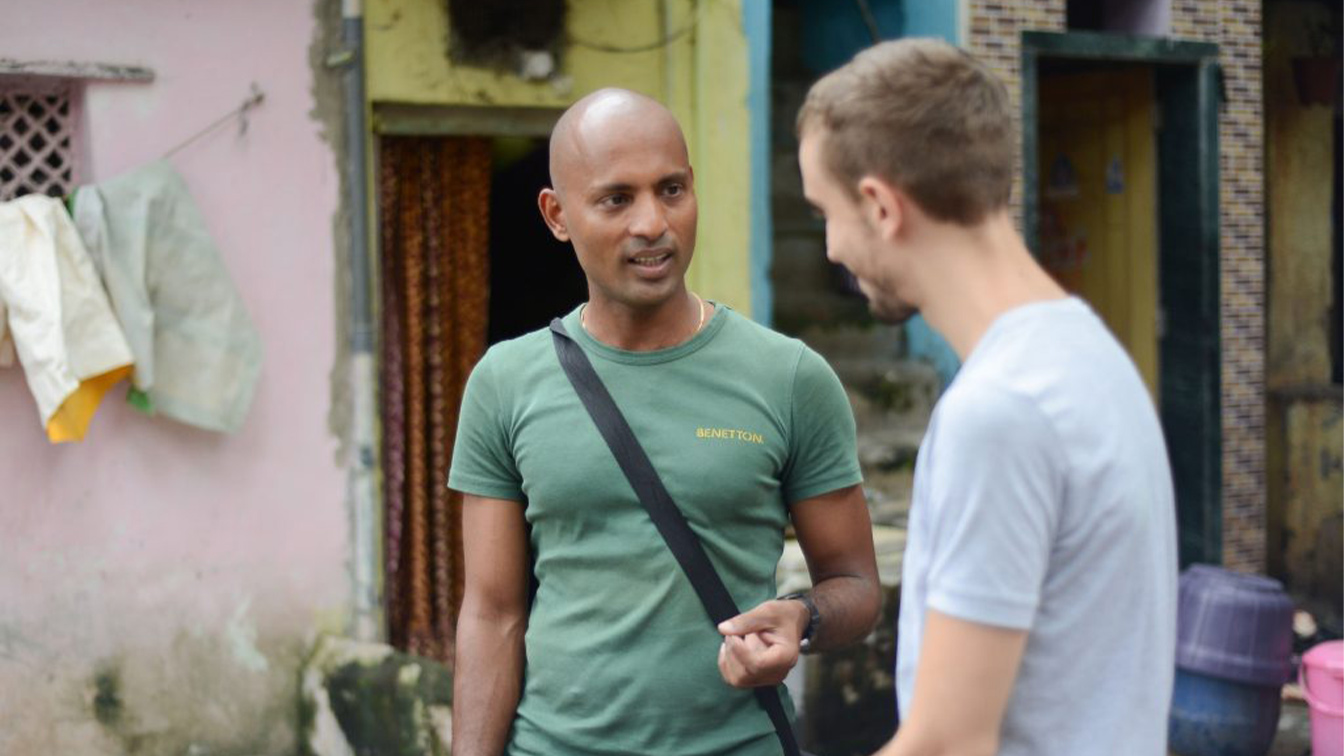
Why I Quit My Job As A Fashion Journalist To Volunteer In A Slum
When I left Paris a few months back, I only had a vague idea of what Dharavi would look like. I imagined a very dense area where thousands, millions of people lived in precarious accommodation. I thought that the streets would all be dodgy alleyways leading from one home to another. Even though I knew I was going to work in one of the biggest slum in Asia, I had no idea how big it really was. And I didn’t want to learn too much about it before going: I wanted my clichés to be shattered by experience.
Discovering Dharavi
I was prepared to face overwhelming poverty. But what I found there was much more complex and fascinating. Just like the rest of Mumbai, Dharavi worked in a chaotic harmony: hectic traffic, overly crowded streets…to the untrained eye, it all seemed very
dysfunctional. But if you stopped for a minute and looked carefully at how the cars, the pedestrians, and even the animals were moving up the roads, it looked like some sort of modern ballet, where everyone had a place and a role to play.
dysfunctional. But if you stopped for a minute and looked carefully at how the cars, the pedestrians, and even the animals were moving up the roads, it looked like some sort of modern ballet, where everyone had a place and a role to play.
Much more than just a slum, Dharavi was a city in the city. And everyone seemed to be busy doing something: while some worked in plastic recycling factories, others ran little shops and restaurants, or worked in one of the main industries (tannery, pottery, bakery…). There were no beggars on the streets, but children on their way to school. There were no muggers in the alleyways, but people showering before heading to work. Where we all expect to see desperation and people struggling, I saw smiles and people making the most out of what they had. And even though a lot of them really wanted to find a way out of the slum, they all embraced life in Dharavi and what it had to offer.
Why I left my job
Some of my friends and relatives had expressed concerns about my volunteering in India. They were afraid that I would get depressed by what I would see, or that I would get sick
by spending too much time in a slum. But as I leave Dharavi, I’m bringing home incredible memories, true friendships and a valuable experience working in a completely different environment.
by spending too much time in a slum. But as I leave Dharavi, I’m bringing home incredible memories, true friendships and a valuable experience working in a completely different environment.
As much as I loved my previous job and colleagues, I often felt very frustrated: writing for
a fashion magazine, I didn’t have any opportunity to meet our readers and felt like I was stuck in an ivory tower, completely disconnected to reality. In Dharavi, I sat only a few meters away from the beneficiaries of Reality Gives’ programs. I was able to see the impact the NGO had on them, I was able to talk with them and I knew why I was doing all this for. With the help of the incredibly nice and devoted team I was working with, I was able to use my skills in a very different way. While I used to write about fashion designers and up-and-coming talents, I was now helping on the annual report of the NGO, designing application forms for the students and doing the layout of English lessons developed by our education and curriculum director. Inspired by how passionate my colleagues were and by the impact the NGO had on people’s lives, I worked as hard as I could, because I knew I was there for a short period of time.
a fashion magazine, I didn’t have any opportunity to meet our readers and felt like I was stuck in an ivory tower, completely disconnected to reality. In Dharavi, I sat only a few meters away from the beneficiaries of Reality Gives’ programs. I was able to see the impact the NGO had on them, I was able to talk with them and I knew why I was doing all this for. With the help of the incredibly nice and devoted team I was working with, I was able to use my skills in a very different way. While I used to write about fashion designers and up-and-coming talents, I was now helping on the annual report of the NGO, designing application forms for the students and doing the layout of English lessons developed by our education and curriculum director. Inspired by how passionate my colleagues were and by the impact the NGO had on people’s lives, I worked as hard as I could, because I knew I was there for a short period of time.
A Day in Dharavi
Every morning, I would commute to the slum from the small studio apartment I was renting in Bandra – a neighborhood of Mumbai that looked like an Indian version of Brooklyn. Walking through the muddy streets of Dharavi in the morning was my favorite part of the day. I would go past old-fashioned barbershops, colorful temples, large
veg stalls, and shabby restaurants. I would look at the cats gathering around the lady who sold fish, at the chicken in cages that were about to get cooked, and at the goats wandering around the streets. But what I loved the most was observing people as they were getting ready for their day. A lot of them were staring back at me: some looked amused, most of them looked intrigued. Occasionally, a man would come and ask me where I was from and what my name was. After a small chat, I would go on walking through the streets, breathing in the smell of incense and soap mixed with fresh meat, sewage and pollution.
veg stalls, and shabby restaurants. I would look at the cats gathering around the lady who sold fish, at the chicken in cages that were about to get cooked, and at the goats wandering around the streets. But what I loved the most was observing people as they were getting ready for their day. A lot of them were staring back at me: some looked amused, most of them looked intrigued. Occasionally, a man would come and ask me where I was from and what my name was. After a small chat, I would go on walking through the streets, breathing in the smell of incense and soap mixed with fresh meat, sewage and pollution.
While I used to spend 10€ on a salad for lunch in Paris, in Dharavi I would spend less than 30 cents buying delicious dosas (rice pancakes) with chutney from an Indian guy who spoke incredibly good English. I would share this with two of my adorable colleagues, in charge of the community center, who would bring chapattis and spicy veg from home. Then, after some chai, we would go back to work carefully seated under the fans.
Royal City School
Every other week or so, I tried to make time to go the Royal City School, an institution based in the northern part of Dharavi, that Reality Gives supported by training 16 teachers. There, I would sit and talk with the school support program director. We would discuss upcoming events at the school, teachers and children’s attendance, but also her passion for Alexandre Dumas. Quite often, a small child would pop his/her head in the office, smile at us, and run back in the corridor with a backpack twice his/her size. All the students wore school uniforms and looked incredibly cute. They were full of energy and actually needed to be as the school curriculum included the study of no less than three languages (Hindi, English and Marathi). After a last glance at the painted classrooms, I would leave the school and take a rickshaw home. On my way back to Bandra, I couldn’t stop smiling at the view of Mahim Bay and at the thought of what I had seen and experienced during the day. The pollution, the traffic, the noise…nothing could ruin this moment. Dharavi was a place of hope. And working there was truly incredible.
